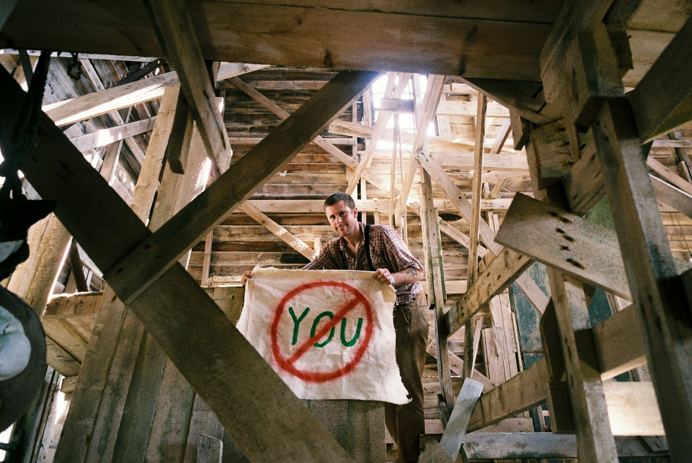Eminent Domain
John David Rhodes and Stephen G. Rhodes
There is a house in the back of the picture. You can’t live in a picture. You can live in a house except you can’t. A lot of people enjoyed the picture, and saw their houses in it. A house isn’t a picture, but is made of space and money. A picture is something made with money, a house is something made with money. Human habitation is corrupt. Property is the key to everything visible. You can’t really knock on a door nowadays—it’s more “ding-dong.” But running someone over is the inevitable invitation of the automobile. Cars come out of and go into houses. They share the same violence. (Oil economy.) No one owns anything. Money doesn’t exist. You can count natural disasters in shotgun houses the same way you can put more people on a football field. Money is a picture the way allegory is a window behind a window behind a window. Islands are for embarkations of bodies. Islands are for arrivals of bodies. Islands are for money, coming and going. Meanwhile, houses produce pictures of themselves. A room is a picture, a room is in a picture, and a room has a machine recording it on the other side of what you can’t see, which is where you are, where the door would be, or the wall (fake as Confederate money)—a machine making this picture of this house and showing it to you.

Notes
John David Rhodes teaches at the University of Cambridge and is an editor of World Picture. He is also the brother of Stephen G. Rhodes.
Stephen G. Rhodes is an artist divided by Berlin and Louisiana. His work is exhibited internationally and is the subject of a monograph, Apologies (JRP Ringer, 2012), published on the occasion of an exhibition at the Migros Museum in Zurich. His most recent solo exhibition is SWEETHAVEN ASSUMPTION, or the Propertyless Preparedness and Pals (2016), at Isabella Bortolozzi Galerie, Berlin.